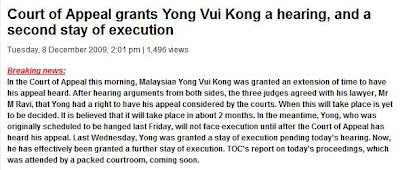I had an interesting chat about Social Constructionism with a friend who recently came to London for a vocation. Social Constructionism is a postmodern movement that shifts people from believing that there is only one definite way to explain the same thing happening in our lives, to positions that there can be many ways to explain it, all of which could be true depending on the social contexts. An example I could think of, in Singapore, is that when I was a child, most people found it outragious for a man to wear earrings, as they perceived it to be too girlish a thing to do. Today, earrings are worn by many men and most people would see it as acceptable. Many Singaporeans may be surprised to know that archaelogists have found evidence that men started wearing earrings earlier than women, such as in ancient Indian tribes (click here to read more).
Wearing earrings is just one of the many ways some societies demarcate what is masculine and what is feminine, yet what has been assumed to be the common sensical differences between men and women are not universal truth but shaped by the cultural environment we live in, which may be similar or different in other cultures, time or space. Having only two gender categories - men and women, itself, is also not as definite as most people still believe; there are at least five gender categories! (See Anne Fasuto-Sterling's The Five Sexes: Why Male and Female Are Not Enough)
While I was very intrigued by the Social Constructionist position, my friend opined that it has contributed nothing new or substantiate enough to change the world. The context of his argument came from his personal experiences and belief that this movement has not helped to bring the world a step further towards eradicating the oppression of the marginalized groups in today's societies. For instance, developed countries like Singapore still retain archaic Victorian law against homosexuality handed down from the Colonial period, even though where it came from, UK, has long repealed it in the last century. To my friend, the way forward for a more long-lasting way for decriminalization of homosexuality in a country, is to win over a majority of public opinions. He also spoke about his discomfort with the use of emotions in the form of public sympathy, such as that with a Malaysian, Yong Vui Kong, from drug trafficking in Singapore. Instead of asserting a judicial call against death sentence, Court of Appeal granted Yong Vui Kong a hearing, and a second stay of execution on 8-December-2009. (Click here for link to article below)
Wearing earrings is just one of the many ways some societies demarcate what is masculine and what is feminine, yet what has been assumed to be the common sensical differences between men and women are not universal truth but shaped by the cultural environment we live in, which may be similar or different in other cultures, time or space. Having only two gender categories - men and women, itself, is also not as definite as most people still believe; there are at least five gender categories! (See Anne Fasuto-Sterling's The Five Sexes: Why Male and Female Are Not Enough)
While I was very intrigued by the Social Constructionist position, my friend opined that it has contributed nothing new or substantiate enough to change the world. The context of his argument came from his personal experiences and belief that this movement has not helped to bring the world a step further towards eradicating the oppression of the marginalized groups in today's societies. For instance, developed countries like Singapore still retain archaic Victorian law against homosexuality handed down from the Colonial period, even though where it came from, UK, has long repealed it in the last century. To my friend, the way forward for a more long-lasting way for decriminalization of homosexuality in a country, is to win over a majority of public opinions. He also spoke about his discomfort with the use of emotions in the form of public sympathy, such as that with a Malaysian, Yong Vui Kong, from drug trafficking in Singapore. Instead of asserting a judicial call against death sentence, Court of Appeal granted Yong Vui Kong a hearing, and a second stay of execution on 8-December-2009. (Click here for link to article below)
On reflection, I can see my friend's point about wanting a fundamental shift in a societal position based on compassion and depth in understanding, as moving people towards embracing multiple perspectives does not eradicate the risk of still having one dominating others based on its position, power and influence within that society.
Meanwhile, my friend seems to have the belief that changes that take effort from emotional appeal is less sustainable than a change from the legal constitution. In my view, they are actually interconnected. Many a times, strong emotions precipitate crises that perturb a current state to the extent that public opinions may shift to a new and more comfortable position. A documentary-drama I watched illustrates this point. It featured Peter Wildeblood, a diplomatic correspondent of Daily Mail, who, in 1954, became the second public person in UK since Oscar Wilde to be sentenced to 18 months of imprisonment for buggery. Peter’s imprisonment stirred public's outcry, especially after his inprisonment, he campaigned publicly for the rights of gays and testified before the Wolfenden Committee. The Committee report in 1957 recommended that homosexual acts between consenting adults in private be legalized. This recommendation was passed in the UK law in 1967.
Meanwhile, my friend seems to have the belief that changes that take effort from emotional appeal is less sustainable than a change from the legal constitution. In my view, they are actually interconnected. Many a times, strong emotions precipitate crises that perturb a current state to the extent that public opinions may shift to a new and more comfortable position. A documentary-drama I watched illustrates this point. It featured Peter Wildeblood, a diplomatic correspondent of Daily Mail, who, in 1954, became the second public person in UK since Oscar Wilde to be sentenced to 18 months of imprisonment for buggery. Peter’s imprisonment stirred public's outcry, especially after his inprisonment, he campaigned publicly for the rights of gays and testified before the Wolfenden Committee. The Committee report in 1957 recommended that homosexual acts between consenting adults in private be legalized. This recommendation was passed in the UK law in 1967.

Screen shorts from a Channel 4 documentary drama featuring Peter Wildeblood, entitled “A Very British Scandal”
How is this relevant to family therapy? Stories of courage drawn from the clients or communities could be thickened via therapy sessions to amplify strengths. Telling stories unravel emotions. Reading the feelings underneath the expressed emotions help draw the underlying meaning attached to belief systems which help families and therapists understand how they impact the relationships within the family in their cultural context.
My friend also shared an encounter where he was invited for dinner by an Indian male friend. While the two men were eating, my friend noticed the Indian wife, who cooked and served the food, standing by a corner. He invited her to join them at the dining table but she declined. Most people at this point would have jumped into conclusion to think - how dare the husband treat the wife like a maid? Such unfairness for women in such a culture with total lack of gender equality!
What happened then was that after declining, the wife asked my friend how he found the food. My friend praised and thanked her for it. Immediately he could see the wife smile and her face was lit up with bliss. This incident made my friend realise that what bring happiness to the wife is not to join the husband and guest at the dining table but to be appreciated for her cooking. Who is he to judge the gender inequality in her culture to be problematic if it serves a function without her or anyone suffering or being exploited?
To me, this is where the social constructionist perspective is helpful. It informs me that I am in no position to be at a moral higher ground than anyone else. What is more important is to start with an open mind, accompanied by a non-judgemental curiousity to listen and observe before drawing conclusions or connection with my personal experiences and values. This is especially important when we face people from a different culture from us, regardless of race, socio-economic status or class, gender, sexual orientation, religion, national origin, language, political orientation, disability or age*.
* A combination of the differences stated in the Codes of Ethics for the Singapore Association for Counselling and the UK Association for Family Therapy and Systemic Practice.
What happened then was that after declining, the wife asked my friend how he found the food. My friend praised and thanked her for it. Immediately he could see the wife smile and her face was lit up with bliss. This incident made my friend realise that what bring happiness to the wife is not to join the husband and guest at the dining table but to be appreciated for her cooking. Who is he to judge the gender inequality in her culture to be problematic if it serves a function without her or anyone suffering or being exploited?
To me, this is where the social constructionist perspective is helpful. It informs me that I am in no position to be at a moral higher ground than anyone else. What is more important is to start with an open mind, accompanied by a non-judgemental curiousity to listen and observe before drawing conclusions or connection with my personal experiences and values. This is especially important when we face people from a different culture from us, regardless of race, socio-economic status or class, gender, sexual orientation, religion, national origin, language, political orientation, disability or age*.
* A combination of the differences stated in the Codes of Ethics for the Singapore Association for Counselling and the UK Association for Family Therapy and Systemic Practice.












